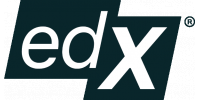- From www.edx.org
Introduction to Biomedical Imaging

- Self-paced
- Free Access
- Fee-based Certificate
- 12 Sequences
- Introductive Level
Course details
Syllabus
The Introduction to Biomedical Imaging course incorporates a case study which is introduced at the start of each episode. This case study will follow a hypothetical patient required to undergo various imaging modalities for a medical condition.
For each episode we include information relevant to that modality and the basic scientific principles, hardware and technology, and clinical applications.
- In episode 1, we'll consider x-rays.
- In episode 2, we'll explore computerised tomography (CT).
- In episode 3, you'll learn about ultrasound (U/S).
- In episode 4, we'll discuss magnetic resonance imaging (MRI).
- In episode 5, you'll learn about PET and SPECT.
Each episode will include several short quizzes which will not contribute to your final grade and will help you understand the key points.
To complete the course, the assessment is a marked quiz for each episode that will contribute to your final grade, plus a final assessment called Assessment Scenarios at the end of the course. Assessment Scenarios involve reviewing 2 case studies/scenarios and answering questions related to imaging modalities of relevance.
Prerequisite
High school level in scientific fields such as biology and a desire to learn are highly recommended. For the advanced section of the course, first tertiary year of applied mathematics or computer science specialised in modelling is recommended.
Instructors
Graham Galloway
Director, National Imaging Facility
The University of Queensland
David Reutens
Director, Centre for Advanced Imaging
The University of Queensland
Ian Brereton
Director, Research and Technology, Centre for Advanced Imaging
The University of Queensland
Gail Durbridge
Senior Research Radiographer, Centre for Advanced Imaging
The University of Queensland
Karine Mardon
Facility Fellow for the preclinical PET/CT
The University of Queensland
Damion Stimson
Research Radiochemist, Centre for Advanced Imaging
The University of Queensland
Rajiv Bhalla
Head of PET and SPECT radiochemistry programs
The University of Queensland
Andrew Janke
Facility Fellow for Informatics
The University of Queensland
Editor
The University of Queensland is a public research university located primarily in Brisbane, the capital of the Australian state of Queensland. Founded in 1909 by the Queensland Parliament, UQ is one of six sandstone universities, an informal designation of the oldest university in each state.
Combining the three world rankings of the most established universities in 2023, the University of Queensland is ranked 2nd in Australia and 42nd in the world. UQ is also a founding member of edX, Australia's leading group of eight and the international research-intensive association of Pacific universities.

Platform
Harvard University, the Massachusetts Institute of Technology, and the University of California, Berkeley, are just some of the schools that you have at your fingertips with EdX. Through massive open online courses (MOOCs) from the world's best universities, you can develop your knowledge in literature, math, history, food and nutrition, and more. These online classes are taught by highly-regarded experts in the field. If you take a class on computer science through Harvard, you may be taught by David J. Malan, a senior lecturer on computer science at Harvard University for the School of Engineering and Applied Sciences. But there's not just one professor - you have access to the entire teaching staff, allowing you to receive feedback on assignments straight from the experts. Pursue a Verified Certificate to document your achievements and use your coursework for job and school applications, promotions, and more. EdX also works with top universities to conduct research, allowing them to learn more about learning. Using their findings, edX is able to provide students with the best and most effective courses, constantly enhancing the student experience.

